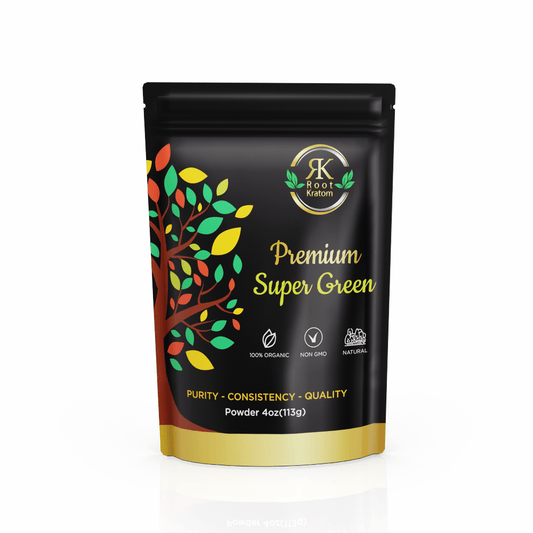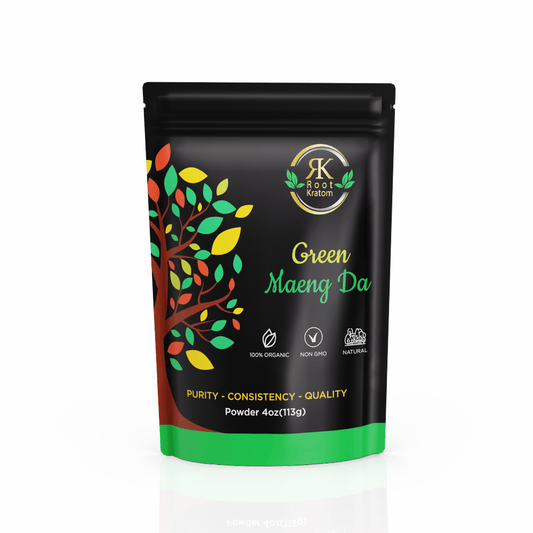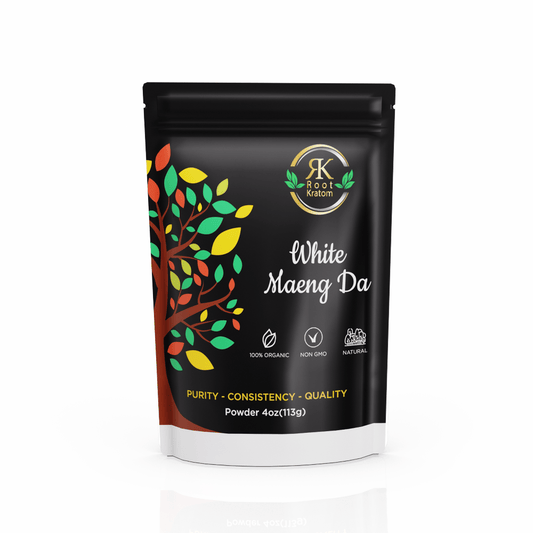
Kratom 101: What You Need to Know
Kratom 101: What You Need to Know
One thing that’s not up for debate is the fact that kratom has grown in popularity in recent years. This is all because of its impacts such as mood-lifting, energy stimulating, and easing of pain. However, it is still very controversial. For example, some people believe in its natural benefits but many others condemn its use pointing out its dangers and legality.
If you are one of the people who are skeptical about its potential and benefits, you are in the right place because today, we will be breaking down kratom to really help you understand it better.
This article will explain various aspects of kratom such as its origin, vital components, how it works, and the different kinds you can find in the market. Let’s get started.
What is Kratom?
Kratom is a plant that is taken for its stimulant and pain-killing effects. It contains active compounds like mitragynine and 7-hydroxy mitragynine (more on these later on), which interact with the body’s opioid receptors.
At low doses, kratom is a stimulant that makes you more alert and focused. At higher dosages, it has a sedative and pain-relieving effect, which has made it a popular form of self-medication for those battling chronic pain, anxiety, or withdrawal symptoms associated with prescription opioid medications. It is usually ingested as a powder, brewed into tea, or consumed as a pill.
Kratom is generating a lot of buzz and controversy across the world. Although some who use it feel it has benefits, health officials have also issued warnings about risks, including dependency, side effects, and a lack of regulation by the Food and Drug Administration. Its legality is different all around the world as some countries prohibit its usage and others allow it with some limitations.
Knowledge of kratom’s effects, safety, and benefits, as well as what it entails, is vital if you plan to use it. In other words, more research is necessary to understand how to use kratom safely.
Origin of Kratom
Kratom (Mitragyna speciosa) is a tropical evergreen tree in Southeast Asia, including Thailand, Malaysia, Indonesia, and Papua New Guinea. Its leaves have been used by indigenous communities for thousands of years, mostly as a stimulant by laborers for treatment of pain, fatigue, or diarrhea. In contrast to its current global application or usage, traditional consumption was confined to the chewing of fresh leaves or the infusion prepared from it. This is used socially or for medicinal purposes.
The Western exposure of the plant goes back to 1831 when it was discovered by Dutch botanist, Pieter Willem Korthals. It was during this period that it got documented during colonial expeditions. But kratom stayed in Southeast Asia until the late 20th century (1980s) when immigrants from communities that used the plant in the U.S. brought it over as an alternative treatment for chronic pain and opium withdrawal.
Historically, kratom has even helped reduce opium addiction during the 19th century in Malaysia and Thailand. These countries would later place kratom on public warning lists to protect opium revenues (from tax). However, the ban has been reversed in recent years because of kratom’s cultural and therapeutic value. Today, while it flourishes in its original, damp climates, there are some challenges with cultivation, and sustainable practices due to an increase in its global demand.
Kratom (Mitragyna speciosa) possesses a fascinating array of bioactive compounds, primarily alkaloids such as mitragynine, which interact with your body’s opioid receptors to produce different effects. More than 40 alkaloids have been found in kratom leaves, with two of them (mitragynine and 7-hydroxy mitragynine (7-OH-MG)) being the most vital. These opioids are the ones that determine kratom’s stimulant, analgesic, and sedative effects. Let’s look at what these two contain below:
Mitragynine
This is the primary or dominant alkaloid in kratom, making up about 60-66% of its total alkaloids. It is a partial agonist at the mu-opioid receptor, like opioid drugs but with a distinct chemical structure, which may account for its pain-relieving effects without causing respiratory depression. Mitragynine interacts with adrenergic, serotonin, and dopamine receptors, thus enhancing energy, focus (at low doses), mood, and reduces symptoms of anxiety.
7-Hydroxymitragynine
This is an active secondary alkaloid. 7-hydroxymitragynine, although present in much lesser amount which is approximately 2% or less of total alkaloid content, is up to seventeen times more potent than mitragynine. It has a higher affinity for mu-opioid receptors, which is what gives kratom its sedative and pain-killing properties at higher doses. Certain studies have indicated that oxidation (or aging and fermenting kratom leaves) may raise 7-OH-MG levels and could change the plant’s effects.
Other Notable Alkaloids
During the evolution of kratom throughout history, two key alkaloids have worked together to deliver kratom’s full effects, even though they are not the sole actors:
Paynantheine: This is a smooth muscle relaxer. It can help with digestion and cramps.
Speciogynine: This contains muscle relaxants and mild sedative effects.
Speciociliatine: This is believed to play a role in mood management.
Corynantheidine: A kappa-opioid antagonist agonist that is believed to influence mechanisms for pain relief.
Additional Compounds
In addition to alkaloids, kratom also contains flavonoids, terpenoids, and polyphenols, which may have antioxidant and anti-inflammatory effects. These chemicals may contribute to some of the purported health effects of kratom, but few studies have been done to confirm that though.
How Kratom Works: Effects on the Body
In this section, we will be talking about how kratom functions in the human system once used. There are various ways that this can happen such as:
Neurological Mechanisms
Kratom works on your brain in the same way as sticking on special places called “opioid receptors”. The primary active ingredients in kratom, mitragynine and 7-hydroxymitragynine, bind to these same receptors. But they do it in a way that’s different from regular drugs like opioids. Instead of sticking fully, they only stick a little (partially). As a result of that, they can also change your mood, and the way you experience pain, but without causing really awful side effects like some of the normal opioids.
Kratom also interacts with some neurotransmitter systems in the brain. For one, it activates the adrenergic receptors, which can make you feel more awake and allow you to focus much more effectively. It may also alter levels of dopamine and serotonin, brain chemicals that can help improve your mood. This explains why kratom effects vary amongst different people.
Is Kratom Legal in the U.S.?
Kratom is federally legal in the United States, but its status varies significantly from state to state—and even county to county. While some regions fully allow the sale and use of kratom, others have imposed strict regulations or complete bans. If you're considering using kratom, it's essential to verify your local laws to ensure compliance.
- Check your state’s regulations in our Kratom Legal Map https://zenhop.com/pages/disclaimer
Stimulant and Relaxing Effects
Kratom can make you feel more relaxed. Those who use it typically report feeling more energetic, thinking more clearly and socializing better with other people more. This could be due to the presence of mitragynine, which interacts with some parts of the brain that manage focus and attentiveness.
When people consume high amount of dosage, they reach a more relaxed, and peaceful state. This could be because its second main component called 7-hydroxymitragynine which interacts with brain receptors that moderate pain. These two primary components in kratom, one that energizes and one that relaxes, combine to determine how it makes you feel in general.
Duration and Metabolism
After consumption, kratom alkaloids are absorbed and metabolized, predominantly in your liver. Effects are usually felt within 15–45 minutes when snorted or swallowed, but can take up to 2–3 hours when consumed in food or drink.
The active ingredients in kratom have a very short half-life. Generally speaking, the effects produced by the active compounds are acute and last for about 3hours, but this time-frame can change depending on a number of things like:
Dose: High dose will extend duration but can cause receptor saturation and lack of effects.
Strain and Alkaloid Profile: Some types of kratom especially those that contain high amount of 7-hydroxymitragynine are most likely to have longer sedative effects as compared to strains that are more energizing.
Tolerance: Regular users may develop a tolerance to alkaloids in kratom, causing them to taste less with time. Shorter durations can occur when their bodies become used to alkaloids.
Personal Physiology: The duration of effects felt can also depend on weight of body, metabolism, hydration and your general health.
Types of Kratom
Understanding the various types can help you know how to use kratom safely.
Red Vein Kratom Strains
These are some of the most sought after for comfort and relaxation. These Kratom strains are more fermented and therefore, contain more properties for soothing effects. Red Kratom aren't usually considered the best Kratom for energy but people like to Red Bali and Red Maeng Da in the evening periods.
They have a balanced alkaloid spread, which means they can be used for a variety of reasons. Higher amounts can lead to deeper relaxation while lower dosages offer mild stimulation. Red-vein varieties are the best if you want relaxing effects.
Green Vein Kratom Strains
These tend to hit that sweet spot between energy and relaxation, and are perfect for use during the day. This Kratom variety like Green Malay or Green Thai, can be used for an improved focus, without any of the side effects of caffeine that can create overstimulation. A Lot of users believe green strains are the best Kratom for energy when you need to be productive for long periods of time.
Their lower alkaloid percentage provides mild euphoria and clarity. So, they're great for both novice kratom users and the most experienced. If you’re searching for the ultimate Kratom strain to increase your energy levels without being overly jittery, you can count on the green strains.
White Vein Kratom Strains
These are well known for their energizing properties, and are often considered the best Kratom for energy. Such Kratom strains include, for example, Borneo or Sumatra, which have high content of alkaloids that induce focus and clarity of thoughts. Great for those your tough, morning jobs.
They are not as sedative as red strains but the best when it comes to energy and focus. Are you looking for something natural to boost your energy? White Kratom strains are unrivalled in this aspect. They are much better than the regular caffeine.
Each kind of Kratom strain is unique in properties and functionalities. White veins are for fatigue (best Kratom for energy production), while the red and green strains offer alternatives that are more balanced.
Final Thoughts
Having seen the above, it is clear that there's a perfect type of kratom for you no matter what your preference or need may be. Are you searching for the best Kratom for energy, sleep, or relaxation? Do you know the ideal strain can impact your routine from morning to night? At Zenhop, we sell only premium lab-tested Kratom. These are highly potent and will meet your expectations without compromise. Click here to assess our assorted collection and choose your ideal fit. This is where your Kratom experience begins.
Frequently Asked Questions About Kratom / Zenhop
Is kratom safe for daily use?
Many people use kratom regularly, but tolerance and dependency can develop. It’s advisable to rotate strains and limit usage frequency. Always consult a healthcare provider for personalized guidance.
Which kratom strain is best for energy and focus?
White vein strains like White Maeng Da and White Borneo are commonly chosen for their stimulating and clarity-enhancing effects.
Can kratom help with sleep or relaxation?
Red vein kratom, such as Red Bali, is popular for promoting calm and improving sleep quality due to its sedative properties at higher doses.
Is kratom legal in my area?
Kratom laws differ across the U.S. Always verify your state and local regulations before purchasing.
Discover Trusted Kratom at Zenhop
Whether you're new to kratom or looking to refine your experience, Zenhop offers a curated selection of premium, lab-tested kratom products. From energizing white strains to soothing reds, we carry only high-quality botanicals you can trust.
👉 Explore Our Full Kratom Collection and find your perfect match today. https://zenhop.com/collections/shop-all
*Disclaimer*
Also, note that kratom isn’t meant to treat or cure any disease. It is best to seek the advice of a medical professional before using it.




